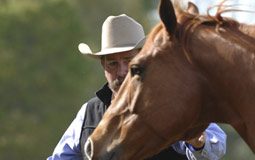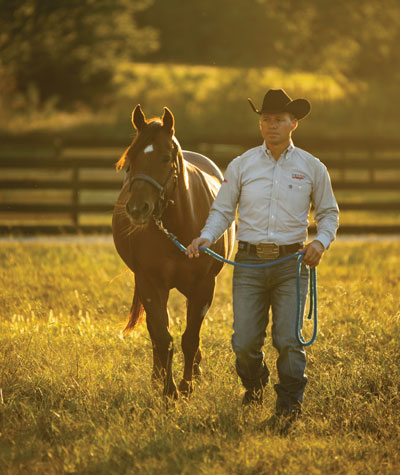
Getting your horse ready for a routine vet appointment is an important part of horse ownership, and for many horse owners, vet day is just another day at the barn. But if your horse won’t stand still for an exam or develops a bad case of the jitters every time the doc comes around, vet day can become a nightmare. Fortunately, there are plenty of easy things you can do to help get your horse ready for a vet day without drama or trauma. Your horse—and your vet—will thank you if you teach your horse how to work with a veterinarian!
Teach Boundaries
American Quarter Horse Association (AQHA) Professional Horseman Ryan Cottingim of Shelbyville, Tenn., says that part of being a responsible horse owner means teaching your horse the basics of good manners.
“As a horse owner, one of our responsibilities is making sure our horse has good manners,” Cottingim says. “If you’re having interactions with your horse on a daily basis, you are a horse trainer. You’re establishing expectations for your horse and establishing the desired responses. It’s your responsibility to set good expectations for your horse, not the vet’s.”
Building respect for personal boundaries is a key part of instilling good manners in your horse. If you allow your horse to invade your personal space, for example, he’ll think it’s OK to invade anyone’s personal space—including the vet’s.
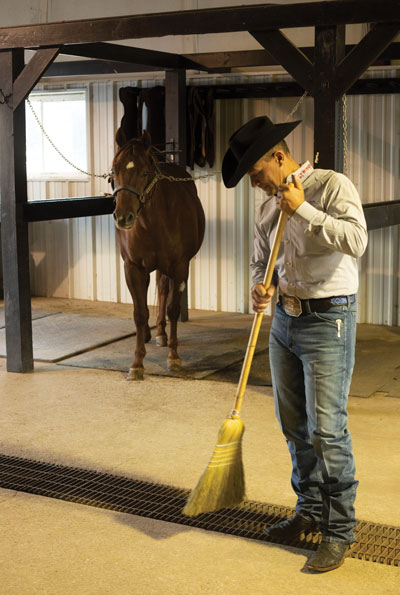
“We want the horse to show a healthy respect for a person’s personal space, or bubble,” Cottingim says. “What I find more often than not is that people think it’s OK to love on a horse’s head and snuggle with him, and then when they take a step back and don’t want the horse in their face anymore, the horse doesn’t understand that and knocks them over. There’s nothing wrong with petting your horse, but you need to set boundaries about your personal space and his personal space.”
Build Patience
When the vet is running late, it’s helpful to have a horse that can stand tied patiently for a few minutes or even an hour. If your horse struggles with this concept, start working on it a few weeks before your appointment. Cottingim calls this “building patience.”
“Building patience doesn’t happen the day the vet shows up,” he says. “It’s something we have to establish ahead of time. Safety is a priority, so find somewhere safe for your horse to stand tied in the barn and make sure you’re using a quick-release knot, and of course, be around to watch him. I’ll maybe do barn chores or yard work [within line of sight] and keep my horse tied up for 10 or 15 minutes and then gradually start increasing the time as he gets used to the concept.”
Your horse might be restless or bored for the first few sessions, but he’ll gradually become accustomed to the habit of standing quietly.
“I think the biggest thing is spending time with your horse before a routine appointment and taking those extra steps to make sure he’ll stand quietly,” says Cottingim. “You want a good experience for your horse, a good experience for you, and a good experience for your vet, because you want them to come back and do work for you. Just a little added effort on your part as a horse owner can make all the difference in the world.”
Prep Work
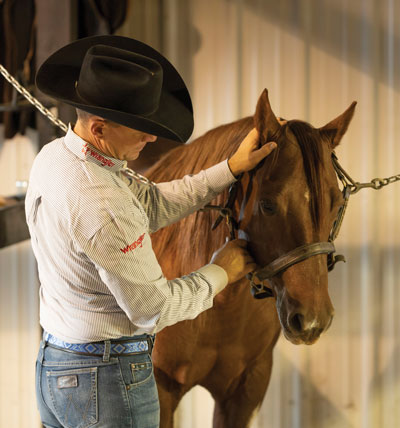
Before you make an appointment, make a list of everything your horse needs, and communicate it to your veterinarian. Then make sure to update your vet in advance if you decide to add something else to the list.
Elise Jones, DVM, owns and operates Stable and Stock Veterinary Services in Watertown, Tenn., a mobile large-animal veterinary service. Jones spends her days on the road, traveling to clients all over southern Kentucky, middle Tennessee and northern Alabama, so being able to plan her visits ahead of time is especially important.
“I know people sometimes complain when the vet or the farrier isn’t on time,” says Jones. “But part of the reason we’re not on time is that it might take us three times longer to do our job than it ought to because someone hasn’t caught their horse yet, or we get there for routine shots and maintenance and the owner says, ‘Well, since you’re here, could you take care of so-and-so, too?’ It’s nice to have a heads-up about that stuff so that I can schedule visits appropriately and not end up pushing my other clients back an hour or more.”
Stay Calm
Even under the best of circumstances, vet day can be a bit chaotic, so it’s best to stay calm. Horses can pick up on your emotions, so if you’re anxious on vet day, you could be making your horse more nervous.
“If you’re going to be high-anxiety because your kids are running around or because there’s a new puppy underfoot, it might be better to leave the kids with grandma and the dog at home,” says Jones.
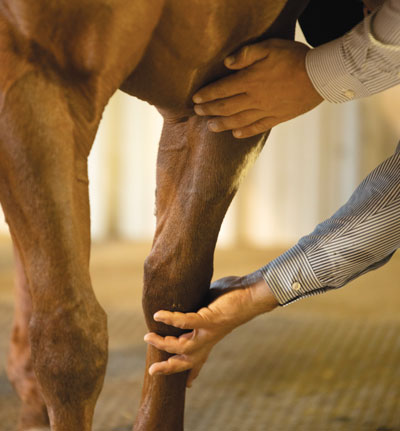
For the extra-nervous horse, Jones says that sedation is always an option, too.
“We want to make it a good experience each time, so if your horse stresses out because he’s had a bad experience with a vet, tell your vet,” she says. “There are oral products that can help calm your horse, and then we can always give them a little extra once we get there.”
Fearful horses can react in unpredictable ways, so it’s important to let your veterinarian know ahead of time if you have a horse that may become aggressive during an exam or an injection. Never assume that your vet remembers your horse’s behaviors from last year, either.
Christine Cocquyt, DVM, works at Tennessee Equine Hospital in Thompsons Station, Tenn., and splits her time between seeing horses at the hospital and doing farm calls in the middle Tennessee area.
“We have a lot of veterinarians in our practice, so an owner may think I’m more familiar with a reactive horse than I am,” says Cocquyt. “Those situations can quickly become dangerous, so it’s helpful for an owner to make the vet aware of any potential problems ahead of time, such as a needle-shy horse.”
What to Do on Vet Day
Even on vet day, try to stick to your horse’s routine as much as possible. Before the appointment, bring your horse in from the pasture and follow your usual grooming routine.
That way, your horse will be clean, and you’ll both be relaxed by the time the vet shows up.
Vet days can be stressful, but with the right preparation for your horse to work with a veterinarian, it can become just another day at the barn for your vet-shy horse.
Get Ready for Vet DayYour vet isn’t coming to critique your horsekeeping practices, but you should take the opportunity to organize your grooming area and tack and feed rooms. ◆ Make a space in the barn where your vet has plenty of room to work with your horse. Designate a clean, well-lit spot in the barn, near a faucet if possible. Pick a spot where the vet can park nearby for easy access to supplies and equipment stored in the truck. |
Emergency Vet VisitsNo one can prepare ahead of time for the emergency vet visit, but you can keep these helpful tips in mind the next time you need the vet for a bleeding laceration or an episode of colic. ◆ Assess the situation, then relay the information to your vet as calmly as you can so they know what they’re dealing with before they arrive. “It depends on the situation, but a brief assessment of what the owner thinks is going on can be helpful,” says Christine Cocquyt, DVM, who works at Tennessee Equine Hospital in Thompsons Station, Tenn. “How is the horse acting? Have there been any major changes recently that might have contributed to the problem?” |
This article on how to help your horse work with a veterinarian appeared in the February 2020 issue of Horse Illustrated magazine. Click here to subscribe!




